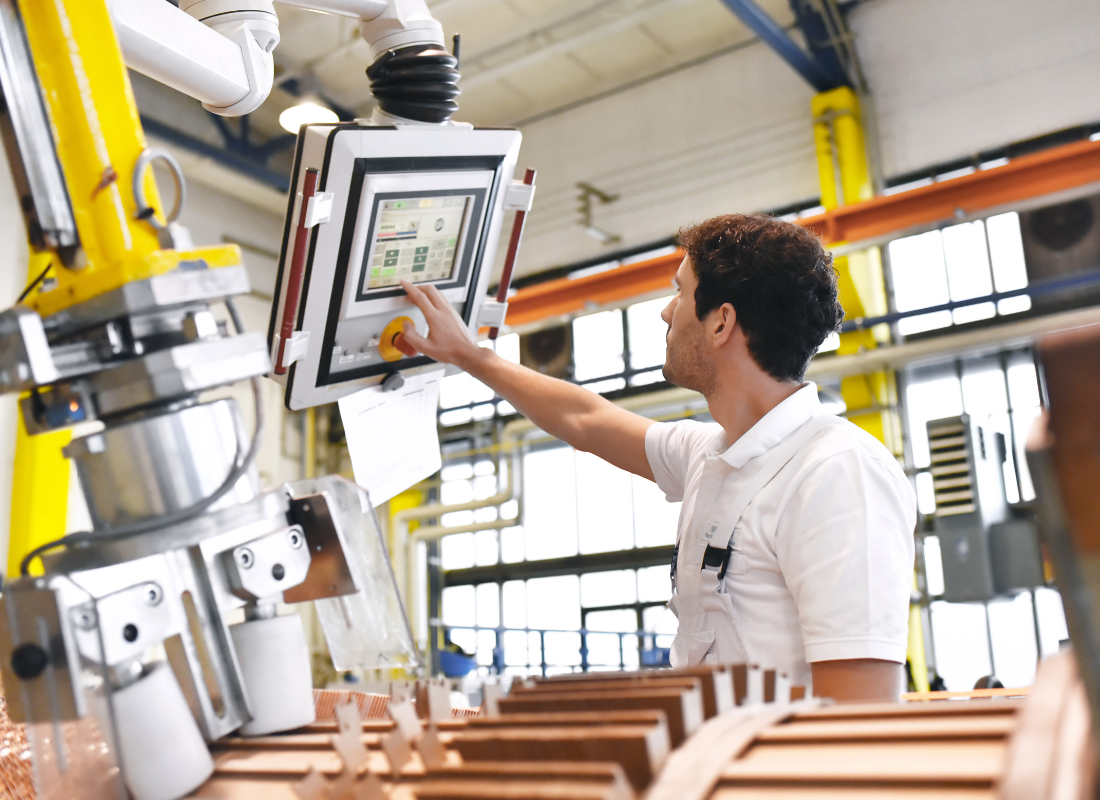Why Industry 4.0 Represents the Future of Manufacturing
Originally published on November 8, 2021
Updated on November 14th, 2024
Recent technological and digital advances are fueling the rise of smart, automated manufacturing facilities. Known collectively as Industry 4.0, these advances represent the future of manufacturing and industry.
Digital transformation of the industrial and production environment lies at the heart of Industry 4.0, which represents a new stage in the organization of the industrial value chain. However, it’s also causing massive disruption to the manufacturing industry and its workforce.
Origin of Industry 4.0 – History of Industrial Revolutions
As its nickname of “the fourth industrial revolution” implies, Industry 4.0 was preceded by three industrial revolutions. The first resulted in large-scale production of goods through the use of water, coal and steam power. The second was spurred by the harnessing of electricity and development of mass production through assembly lines. And the third resulted from the advent of computers and massive gains in information processing and sharing.
This fourth revolution is centered on the merging of human and machine capabilities. Manufacturing is being transformed into a highly connected, intelligent, and more productive industry through the use of new technologies:
- Artificial intelligence (AI)
- Machine learning)
- The internet of things (IoT)
- Augmented reality (AR)
- Robotics (including industrial robots, collaborative robots and autonomous robots)
- Additive manufacturing
- Data analytics, predictive modeling, cloud computing, etc.
Contemporary Workforce Issues
These new technologies are transforming the manufacturing industry and its workforce. The labor-intensive factory floor of the past is being replaced by smart manufacturing facilities with increasingly tech-savvy workers. However, many companies are struggling to upskill their current workforce to take on new responsibilities made possible by Industry 4.0. And recruiting new employees with the right skill sets has become a real challenge.
Most investments in artificial intelligence and automation are not expected to displace human workers, but instead combine people and technology in new ways. Ultimately, these new technologies will lead to automation performs repetitive and routine tasks—freeing humans up to create more value and new opportunities. Therefore, investing in training and empowering workforces in these new technologies will be critical for manufacturers going forward.
Technical Skills Gap
Most manufacturers are still in the early stages of implementing digital automation technologies. Many lack the necessary technological skills to implement these solutions or understand the new abilities required. Finding the right people with the right skills will be critical to implementing a successful plan.
Implementation of these new technologies will identify roles where humans excel over machines (leading, creating, judging, critical thinking) and machines outperform humans (executing repetitive tasks, analyzing, predicting, adapting). There will also be areas where humans and machines work best collaboratively, each complementing and extending the potential of the other.
As these new technologies are implemented, human resources departments will be required to hire for positions that don’t currently exist. Some of these include data scientist/analyst, machine learning engineer, collaborative robot specialist, data quality analyst, and AI programmers and software engineers.
Skilled Workers Are in Short Supply
The skilled labor gap is nothing new to today’s manufacturers; in fact, it’s been a challenge for quite some time. Manufacturing historically suffers from a reputational bias, with many high school and college students considering these jobs unsafe or dirty.
As manufacturing becomes more automated, however, the labor gap for these tech-savvy jobs will be even more pronounced. Competition will increase further when it comes to attracting and retaining the best and brightest talent in these new areas.
Manufacturers are using two primary methods to bridge the labor gap.
- Hiring from the outside. This involves building relationships with academic institutions (local high schools, community colleges, trade schools and universities) to promote manufacturing. Efforts include developing internships and apprentice programs that generate a pool of qualified candidates with these new skills.
- Training and promoting from within. Some manufacturers are developing or outsourcing training programs for their current workers to provide them with the new skills needed for the future. This might involve teaching them how to manage automated processes or take on creative jobs less likely to be replaced through automation. These companies understand that Industry 4.0 requires majors investments not only in new technologies, but also in their people.
Most manufacturers will find they need a workforce strategy that combines both of these methods.
Now is the Time to Implement Effective Change Management
Factories and workforces alike must change and adapt to Industry 4.0. As Baby Boomers continue to retire, the manufacturing workforce will naturally become younger and more tech savvy. However, companies will need to implement effective change management across the board to educate, train and upskill workers for the high-tech profession manufacturing is becoming.
A manufacturing-focused CPA firm can prove to be a strong ally in this effort. In addition to financial knowledge, they often possess expertise in advisory services like human resources, technology consulting, and other relevant areas. A multi-faceted approach to Industry 4.0 is your best chance of success.
All content provided in this article is for informational purposes only. Matters discussed in this article are subject to change. For up-to-date information on this subject please contact a James Moore professional. James Moore will not be held responsible for any claim, loss, damage or inconvenience caused as a result of any information within these pages or any information accessed through this site.
Other Posts You Might Like

